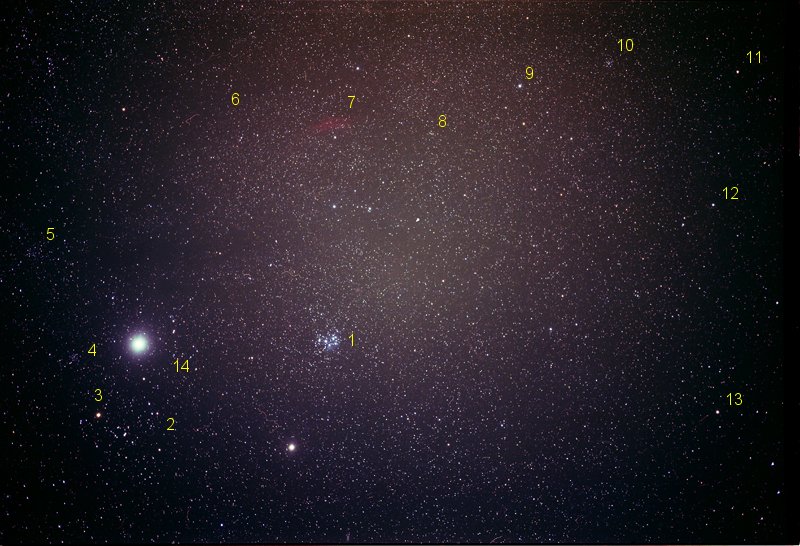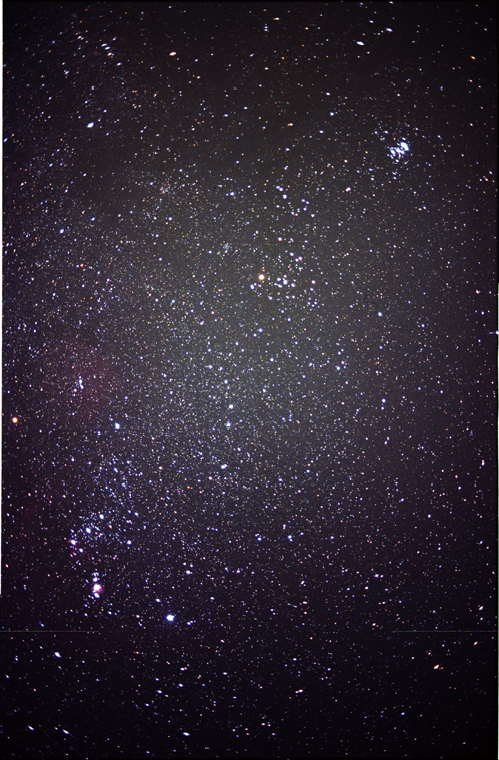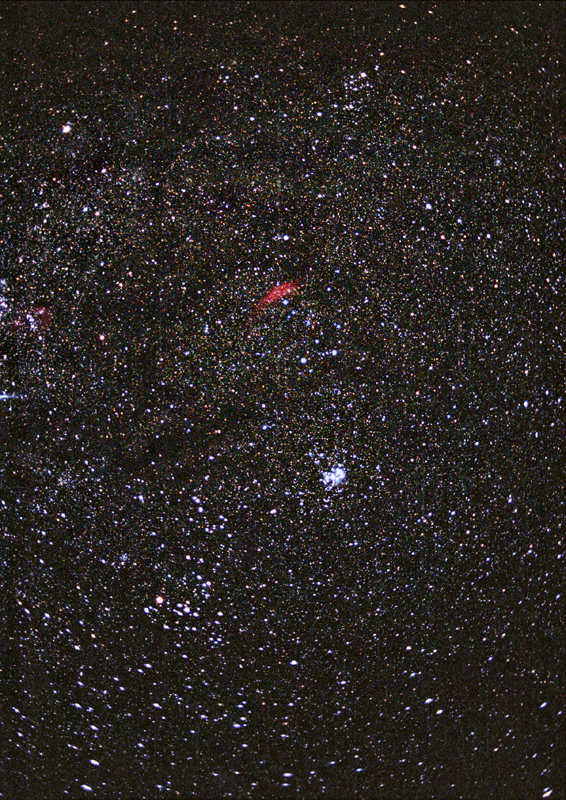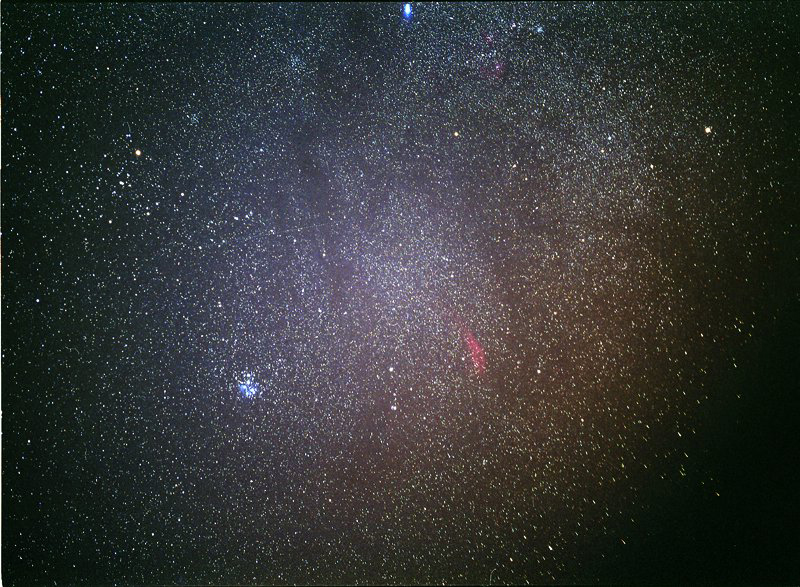
30 minutes exposure on Kodak Ektachrome 400 film, using a 100mm f/2.8 Pentax lens.

This photograph shows the constellations of Aries, western Taurus and southern Perseus. From Australia, the appearence of Taurus heralds the appearence of the summer Milky Way, which is just out of view to the east in this photograph. There are numerous deep-sky objects visible in the image. For example, the Pleiades are close to the centre of the photograph, and above the Pleiades is the California Nebula, NGC 1499, while near the lower left-hand edge is the "V" shaped Hyades cluster. The very bright object above the Hyades is the planet Jupiter. Below the Pleiades is another bright object. This is the planet Saturn. A list of the deep-sky objects marked in the image is below.
| Number | Name | R.A. | Dec | |
| 1 | The Pleiades M45 | 3 45 | +24 06 | Image |
| 2 | The Hyades | 4 28 | +15 52 | |
| 3 | Aldebaran alpha tauri | 4 35.9 | +16 30.6 | |
| 4 | NGC 1647 | 4 45.9 | +19 08 | Image |
| 5 | NGC 1746 | 5 03.6 | +23 49 | Image |
| 6 | NGC 1579 | 4 30.1 | +35 17 | |
| 7 |
NGC 1499 The California Nebula |
4 00.5 | +36 33 | Image |
| 8 | NGC 1342 | 3 31.6 | +37 23 | |
| 9 |
Algol beta persii |
3 08.2 | +40 57.4 | |
| 10 |
M 34 NGC 1039 |
2 42.1 | +42 45 | Image |
| 12 | beta triangulii | 2 09.5 | +34 59.2 | |
| 13 |
Hamal alpha aries |
2 07.2 | +23 27.7 | |
| 14 |
NGC 1554/1555 Hind's variable nebula |
4 21.9 | +19 32 |


30 minutes exposure on Fuji Super HG V 400 film, using a 35mm f/3.5 canon lens.

30 minutes exposure on Fuji Super G 400 film, using a 100mm f/2.8 Mamiya lens.
As autumn gives way to the approaching winter in the southern hemisphere, so Taurus sinks slowly into the evening twilight. Its disappearence heralding long nights and cool weather. This wide-field image shows the California nebula sinking close to the horizon with the Pleiades to the left. Near the top of the image is Auriga with nebulae IC 405 and IC 410. The bright star at the top off the image is Alnath, beta taurii.